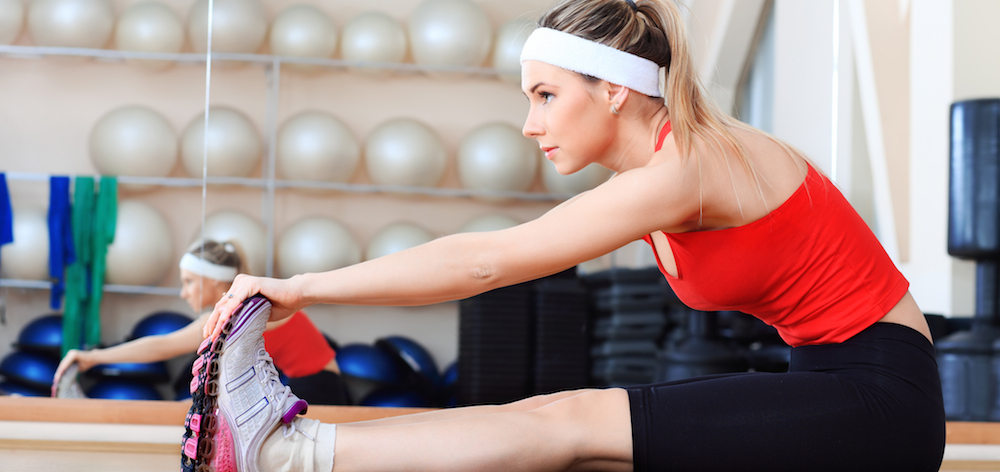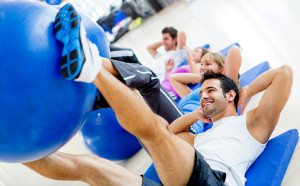Your high school PE teacher knew a lot more than you probably gave her credit for, especially regarding the importance of stretching before physical activity. Apart from being one of the least liked aspects of exercise, stretching has been scientifically proven to confer numerous benefits to muscle and joint health, especially for older adults striving to maintain an active lifestyle. Even young athletes in their prime stand to gain enormous benefit from pre- and post-workout stretches including improved performance and injury prevention.
 When muscles and tendons are placed under a gradual and sustained stretch (no bouncies), several physiological phenomena occur that serve to ready the muscle unit for action. Through the activation of β-receptors, arteries providing blood flow to the muscles dilate causing a subtle engorgement, which provides ready oxygen for aerobic consumption. In addition, nerve fibers conveying inhibitory signals to relax the muscle (as a part of a protective mechanism to prevent muscle injury from over-stretching) become conditioned and reduce their inhibitory effect. This enables peak muscle performance without reflexive inhibition at the extremes of stretch. The muscle and tendon unit is now ready to fire on all cylinders and through the full range of motion, giving you peak performance.
When muscles and tendons are placed under a gradual and sustained stretch (no bouncies), several physiological phenomena occur that serve to ready the muscle unit for action. Through the activation of β-receptors, arteries providing blood flow to the muscles dilate causing a subtle engorgement, which provides ready oxygen for aerobic consumption. In addition, nerve fibers conveying inhibitory signals to relax the muscle (as a part of a protective mechanism to prevent muscle injury from over-stretching) become conditioned and reduce their inhibitory effect. This enables peak muscle performance without reflexive inhibition at the extremes of stretch. The muscle and tendon unit is now ready to fire on all cylinders and through the full range of motion, giving you peak performance.
There is an added benefit to stretching for older adults who are prone to tendonitis (tendon inflammation) and tendinosis (degeneration of tendons). The hamstring tendons are notorious for overuse injury, especially in January when the “resolutioners” take to the athletic stage for the first time after months of inactivity. With age, the collagen fibers (the braid that makes up the core of the tendon) accumulate microinjury that is imperfectly repaired by the body’s cells. This results in deteriorating tendon quality and a progressive inability to withstand tensile loads (stretch) as well as peak contractile forces (during muscle activation). The poor tendon quality and sudden increase in activity create the perfect storm for partial or full thickness tearing, putting you out of commission. A daily stretching program consisting of 8 – 10 seconds of a gradual and sustained stretch for each muscle group can substantially mitigate the deleterious effects of tendinosis.
Whether you’re a young athlete in your prime or a seasoned veteran who’s not yet ready to give up the sport, all it takes is 5 – 10 minutes a day to keep yourself healthy, strong, and out of the doctor’s office.
Dr. Tigran Garabekyan is a board certified orthopedic surgeon specializing in the treatment of shoulder, hip, and knee problems. To learn more about treatments provided by Dr. Garabekyan or to schedule a consultation, click here to contact us. Serving patients in Encino, Sherman Oaks, Van Nuys, North Hollywood, Burbank, Glendale, West Hollywood, Beverly Hills, Santa Monica, Los Angeles, and other neighboring cities in the greater Los Angeles area.


 Given the increasing popularity of CrossFit, High Intensity Interval Training (HIIT), and Spin Classes, we’d like to take a moment to reflect on the pros and cons of each from an orthopedic perspective.
Given the increasing popularity of CrossFit, High Intensity Interval Training (HIIT), and Spin Classes, we’d like to take a moment to reflect on the pros and cons of each from an orthopedic perspective.


